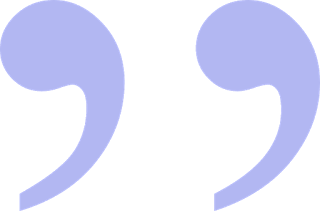Pearl Zhu's Blog, page 1286
October 20, 2016
How important is it to Identify Decision Bottlenecks?
 Either at the individual level or corporate level, people have to make decisions, strategic or tactical, large or small even at daily basis. The business and the world become over-complex, hypercompetitive, and unprecedented uncertain, what is the best scenario to make effective decisions, and how important is it to identify decision bottlenecks?
Either at the individual level or corporate level, people have to make decisions, strategic or tactical, large or small even at daily basis. The business and the world become over-complex, hypercompetitive, and unprecedented uncertain, what is the best scenario to make effective decisions, and how important is it to identify decision bottlenecks?
Do some systematic analysis in order to create more updated processes to smoothie the decision-making scenario: First, identification of tasks; understand the tasks and how they should be sequenced. And, how to leverage information associated with tasks optimally to make effective decisions. In order to identify decision bottlenecks, it might need to first categorize what kind of bottlenecks existing: the hard one like out of dated process, procedure, practice or soft one like culture, politics or decision styles, etc. The distinction between the decision quality and the outcome is important. If the decision-making scenario is well designed and executed, you have the highest probability of getting the best outcome in the state of knowledge accessible at the time of decision.
Communication bottleneck: Many times responsibilities or goals are communicated but the decision makers, in the case of conflicts, are not clearly identified and even when they are clear. There tend to be definitely perceivable choke points due to the inadequate delegation. It is important to identify the choke points when the responsibilities are being created and helps improve decision effectiveness via understanding the interrelationship of time, group, and decision making. For communicating shared goals and co-make decisions, effective communicators are working to spread that throughout the organization in a diverse set of activities with mixed communication styles. The important steps should be taken to ensure that consistency in message delivery. There are layers of responsibilities on the employee. Sometimes it is very difficult on the employee to understand what they are expected to do due to cultural inertia or process ambiguity. Lack of clarity in decision makers or decision bottlenecks only adds to their frustration.
 Decision bottlenecks are related to management systems and governance discipline: Decisions are necessary as a result of limited resources in time, knowledge, capital, and people. Decision making often lies in informal and closed group power centers within the organization. If you can understand the culture along with organizational chart, you would often know which lever to use to get the decision approval done. There is too often a tendency to take a one-size-fits-all approach to decision making, which includes a linear and static decision-making scenario which commits to a singular path. There are both internal elements and external elements in decision-making scenario, internal factors which may influence the decision process include such as the goals of the decision maker, decision situation, decision context, relevant information, and knowledge, as well as the organizational capabilities and resources. External factors which can influence strategic decision-making include technology factors, political and legal conditions, and competition and consumer demands. Decision-making today needs to take a systematic approach, but via nonlinear, collective thinking, the mix of analytics and intuition, and group contribution.
Decision bottlenecks are related to management systems and governance discipline: Decisions are necessary as a result of limited resources in time, knowledge, capital, and people. Decision making often lies in informal and closed group power centers within the organization. If you can understand the culture along with organizational chart, you would often know which lever to use to get the decision approval done. There is too often a tendency to take a one-size-fits-all approach to decision making, which includes a linear and static decision-making scenario which commits to a singular path. There are both internal elements and external elements in decision-making scenario, internal factors which may influence the decision process include such as the goals of the decision maker, decision situation, decision context, relevant information, and knowledge, as well as the organizational capabilities and resources. External factors which can influence strategic decision-making include technology factors, political and legal conditions, and competition and consumer demands. Decision-making today needs to take a systematic approach, but via nonlinear, collective thinking, the mix of analytics and intuition, and group contribution.
The lack of clarity usually surrounds the context of the decision to be taken. It is important to identify the bottleneck in decision-making scenario and choking point in decision-related communication or delegate. Decision making is situational, nothing is clear or concise. At the strategic level, therefore, the decision is not about good vs bad outcomes. It’s about how to leverage both internal and external factors, information and intuition in making sound judgment and taking actions to move the business and the world forward.
Follow us at: @Pearl_Zhu
Published on October 20, 2016 22:46
October 19, 2016
The Monthly Decision Making Insight: Decision Making Pitfalls Oct. 2016
Decision making is the arena across the art and science; gut feeling and data driven, confidence and humility.
 Making a decision is one of the significant tasks for business leadership, however, the high ratio of strategic decisions have been made poorly and cause the catastrophic effect. How to avoid such decision pitfalls, to make effective decisions both strategically and tactically?
Making a decision is one of the significant tasks for business leadership, however, the high ratio of strategic decisions have been made poorly and cause the catastrophic effect. How to avoid such decision pitfalls, to make effective decisions both strategically and tactically?
How Does a Senior Leader Deal With Blind spots in Decision Making? There’s knowing unknown, there’s unknowing unknown, so it's not a new topic about “Blind Spots,” everyone perhaps has some, but as a senior business leader (or any kind of leader), the blind spots will cloud your vision, trigger your negative emotion, cause your decision ineffectiveness, and screw your leadership competency. So what're the causes of the blind spot, and how to deal with them logically??
Is Communication the Bottleneck in Decision Making? Communication is KEY to modern management, however, communication is not just the soft discipline, it’s both art and science. For example, there’re communication challenges between management and employees, there’s “lost in translation” in cross-functional conversations, how to overcome such challenges? Is communication the bottleneck in decision making, how to achieve the expected outcome? Understanding the logic behind these inquiries can untie the communication knots.?
The Value or Bias behind Decision Making? Business leaders and managers spend the significant time on making both strategy (long-term) and tactical or operational (mid or short term) decisions, and those decision effects will directly impact businesses’ top line growth and bottom line surviving. Some use gut feeling more often to make decisions, few are good at doing data-oriented decision making, in order to decide smartly, what’s your perspectives of value or bias behind decision making??
An Anti-Digital Mind: A Procrastination Mind? Decision making is both art and science, especially for business leaders, making either strategic or tactical decision effectively is one of the most critical responsibilities facing them every day. So do you have a decisive mind or an anti-digital mind -the procrastination, “the act or habit of procrastinating, or putting off or delaying, especially something requiring immediate attention”?
 The Cause and Effect of Silo Thinking? Silo is perhaps one of the most paradoxical symptoms in running business at the industrial era, on one side, most of the organizations are still operating in the functional base to improve efficiency; on the other side, the digital nature of hyperconnectivity and interdependence makes it inevitable to break down the silo, because more often than not, the silo thinking becomes the root cause of ineffective leadership; the silo team fragment the strategy, stagnate execution, motivate the unhealthy internal competition and cause more problems than benefits. More specifically, what’s the cause and effect of silos and silo thinking?
The Cause and Effect of Silo Thinking? Silo is perhaps one of the most paradoxical symptoms in running business at the industrial era, on one side, most of the organizations are still operating in the functional base to improve efficiency; on the other side, the digital nature of hyperconnectivity and interdependence makes it inevitable to break down the silo, because more often than not, the silo thinking becomes the root cause of ineffective leadership; the silo team fragment the strategy, stagnate execution, motivate the unhealthy internal competition and cause more problems than benefits. More specifically, what’s the cause and effect of silos and silo thinking?
The blog is a dynamic book flowing with your thought; growing through your dedication; sharing your knowledge; conveying your wisdom, and making influence through touching the hearts and connecting the minds across the globe. The “Future of CIO” Blog has reached 1.5 million page views with about #3000 blog posting. Among 59+ different categories of leadership, management, strategy, digitalization, change/talent, etc. Blogging is not about writing, but about thinking and innovating the new ideas; it’s not just about WHAT to say, but about WHY to say, and HOW to say it. It reflects the color and shade of your thought patterns, and it indicates the peaks and curves of your thinking waves. Unlike pure entertainment, quality and professional content takes time for digesting, contemplation and engaging, and therefore, it takes the time to attract the "hungry minds" and the "deep souls." It’s the journey to amplify diverse voices and deepen digital footprints, and it's the way to harness your innovative spirit.
Follow us at: @Pearl_Zhu
 Making a decision is one of the significant tasks for business leadership, however, the high ratio of strategic decisions have been made poorly and cause the catastrophic effect. How to avoid such decision pitfalls, to make effective decisions both strategically and tactically?
Making a decision is one of the significant tasks for business leadership, however, the high ratio of strategic decisions have been made poorly and cause the catastrophic effect. How to avoid such decision pitfalls, to make effective decisions both strategically and tactically?
How Does a Senior Leader Deal With Blind spots in Decision Making? There’s knowing unknown, there’s unknowing unknown, so it's not a new topic about “Blind Spots,” everyone perhaps has some, but as a senior business leader (or any kind of leader), the blind spots will cloud your vision, trigger your negative emotion, cause your decision ineffectiveness, and screw your leadership competency. So what're the causes of the blind spot, and how to deal with them logically??
Is Communication the Bottleneck in Decision Making? Communication is KEY to modern management, however, communication is not just the soft discipline, it’s both art and science. For example, there’re communication challenges between management and employees, there’s “lost in translation” in cross-functional conversations, how to overcome such challenges? Is communication the bottleneck in decision making, how to achieve the expected outcome? Understanding the logic behind these inquiries can untie the communication knots.?
The Value or Bias behind Decision Making? Business leaders and managers spend the significant time on making both strategy (long-term) and tactical or operational (mid or short term) decisions, and those decision effects will directly impact businesses’ top line growth and bottom line surviving. Some use gut feeling more often to make decisions, few are good at doing data-oriented decision making, in order to decide smartly, what’s your perspectives of value or bias behind decision making??
An Anti-Digital Mind: A Procrastination Mind? Decision making is both art and science, especially for business leaders, making either strategic or tactical decision effectively is one of the most critical responsibilities facing them every day. So do you have a decisive mind or an anti-digital mind -the procrastination, “the act or habit of procrastinating, or putting off or delaying, especially something requiring immediate attention”?
 The Cause and Effect of Silo Thinking? Silo is perhaps one of the most paradoxical symptoms in running business at the industrial era, on one side, most of the organizations are still operating in the functional base to improve efficiency; on the other side, the digital nature of hyperconnectivity and interdependence makes it inevitable to break down the silo, because more often than not, the silo thinking becomes the root cause of ineffective leadership; the silo team fragment the strategy, stagnate execution, motivate the unhealthy internal competition and cause more problems than benefits. More specifically, what’s the cause and effect of silos and silo thinking?
The Cause and Effect of Silo Thinking? Silo is perhaps one of the most paradoxical symptoms in running business at the industrial era, on one side, most of the organizations are still operating in the functional base to improve efficiency; on the other side, the digital nature of hyperconnectivity and interdependence makes it inevitable to break down the silo, because more often than not, the silo thinking becomes the root cause of ineffective leadership; the silo team fragment the strategy, stagnate execution, motivate the unhealthy internal competition and cause more problems than benefits. More specifically, what’s the cause and effect of silos and silo thinking?
The blog is a dynamic book flowing with your thought; growing through your dedication; sharing your knowledge; conveying your wisdom, and making influence through touching the hearts and connecting the minds across the globe. The “Future of CIO” Blog has reached 1.5 million page views with about #3000 blog posting. Among 59+ different categories of leadership, management, strategy, digitalization, change/talent, etc. Blogging is not about writing, but about thinking and innovating the new ideas; it’s not just about WHAT to say, but about WHY to say, and HOW to say it. It reflects the color and shade of your thought patterns, and it indicates the peaks and curves of your thinking waves. Unlike pure entertainment, quality and professional content takes time for digesting, contemplation and engaging, and therefore, it takes the time to attract the "hungry minds" and the "deep souls." It’s the journey to amplify diverse voices and deepen digital footprints, and it's the way to harness your innovative spirit.
Follow us at: @Pearl_Zhu
Published on October 19, 2016 22:50
The New Book “Change Insight” Quote Collection II
 There are many books written about changes, but very few dig into the mindset level. Change Management starts with a thought, with a flash of insight, insight is the act or result of understanding the inner nature of changes or of seeing things intuitively, Here are a set of insightful quotes to inspire change and convey the digital philosophy of Change Management:
There are many books written about changes, but very few dig into the mindset level. Change Management starts with a thought, with a flash of insight, insight is the act or result of understanding the inner nature of changes or of seeing things intuitively, Here are a set of insightful quotes to inspire change and convey the digital philosophy of Change Management: 32 Be humble, desire insight, squash arrogance, and be cognizance of unknown.33 Change Management can become more successful with people at the core of change, the cause of change and the purpose of change. 34 Managing change is no longer a one-time project, but an ongoing business capability.35 Innovation is the change, Change Management needs to be an integral part of innovation management.36 The “result” of micromanagement is perhaps tangible in the short run, but more often causes damage for the long term.37 Change Management is both art and science.38 To think critically, it is fist maturing and distancing a bit from self, no matter what level one lives on Maslow’s hierarchy of needs.39 To clear the path, whether that be the elimination of obstacles, closing the blind spots, or to provide guidance, so that the business as a whole can take a digital leap and unleash its full potential.40 Perhaps the difficulty in measuring Change Management is that the very thing we are measuring is changing.41 It’s probably better and more accessible to measure change readiness rather than change progress.42 Whatever the measurement system is, it needs to be consistent, repeatable and as unbiased as possible.43 Selecting the right measure and measuring things right are both art and science. And KPIs influence management behavior as well as business culture.44 If you make change part of your operation routine and your DNA, and then change becomes easier to deal with, and even become an ongoing core business capability.45 To make change sustain, the important thing is “end-to-end” performance.46 Have always looked at a lag measures as the method for measuring the outcomes and the lead measure as the bet you make.47 If you make change part of your operation routine and your DNA, and then change becomes easier to deal with, and even become an ongoing core business capability.48 The overall organizational health needs to be measured via employee engagement, culture readiness, business agility, and customer-centricity. 49 Organizational maturity is not just about technical excellence or process efficiency, but also about business effectiveness, agility, innovation intelligence, and people-centricity.50 The future or organizations have amazing digital traits such as customer-centricity, empathy, and participation.51 Forward-thinking means to focus on the future, even a few steps ahead, to build a long-term prosperity.52 Structure and behavior are two elements co-working in every organism in nature and in every system designed by human culture.
 53 An agile organization is one that is open to change and can adapt readily when change is needed.54 The organizational fit is the good balance of the fitting attitude and misfit thinking.55 Wisdom in the workplace means to inspire creativity, learning, and progression, but discourage unprofessionalism and negativity.56 For humans to move to higher ground, we must have different views, but share the common ground as well.57 The multidimensional digital effects provide impressive advantages in terms of the speed of delivery, the quality of information for decision making, and the wisdom of digital workforce.58 One of the good reasons for change is to keep the organization fit, and a fitting business has better changeability and higher agility as well.
53 An agile organization is one that is open to change and can adapt readily when change is needed.54 The organizational fit is the good balance of the fitting attitude and misfit thinking.55 Wisdom in the workplace means to inspire creativity, learning, and progression, but discourage unprofessionalism and negativity.56 For humans to move to higher ground, we must have different views, but share the common ground as well.57 The multidimensional digital effects provide impressive advantages in terms of the speed of delivery, the quality of information for decision making, and the wisdom of digital workforce.58 One of the good reasons for change is to keep the organization fit, and a fitting business has better changeability and higher agility as well.59 Awareness is the first step of Change Management, it starts from the mindset level.
Follow us at: @Pearl_Zhu
Published on October 19, 2016 22:46
Five Stages of IT Organizations
 Due to the exponential growth of information, changing nature of technology, and continuous disruptions of digitalization nowadays, CIOs seem to be always at hot seat, and the saying about the demise of the internal IT has been around for years. In reality, the majority of IT organizations get stuck in the lower level of maturity, slow to change. Take a critical look at IT, on which the following stage is your IT organization? CIOs need, to be honest with yourself about assessing the strengths and weaknesses of IT organization. Then you should validate your observations by seeking input from your customers, with the goal on how to reinvent IT and improve its effectiveness, agility, and maturity?
Due to the exponential growth of information, changing nature of technology, and continuous disruptions of digitalization nowadays, CIOs seem to be always at hot seat, and the saying about the demise of the internal IT has been around for years. In reality, the majority of IT organizations get stuck in the lower level of maturity, slow to change. Take a critical look at IT, on which the following stage is your IT organization? CIOs need, to be honest with yourself about assessing the strengths and weaknesses of IT organization. Then you should validate your observations by seeking input from your customers, with the goal on how to reinvent IT and improve its effectiveness, agility, and maturity?
Order Taker: The majority of IT organizations still run in a static industrial mode -”built to last," not “designed to change.” All too often, IT acts like an order taker, overloaded and understaffed, many businesses still view IT exclusively as a cost center. If the business doesn’t view IT as being on the same level, they won’t properly communicate or align with the IT department. More often, this comes down to the business feeling that IT can't keep up with their demand for new services, in other words, that IT isn't as agile, flexible and innovative as it needs to be. Most of the CIOs today don’t seem to be business strategists. CIOs are always in supporting roles and they don't have the same level of power and control to directly influence executive decision-making. In fact, they should have much more influence and power in an organization than they know as they provide technology backbone to the entire business. Many CIOs consider IT organization as a separate entity that "support" other business units and do not consider themselves as an integral part of the company so they keep asking for empowerment and influence. If your organization is still perceived as an order taker only by businesses and customers, it means IT gets stuck on the lower level of maturity, running in a reactive mode, operation driven as a support center.
Service Provider: Many IT organizations still run as a commodity IT service provider, they don’t challenge the best practices or keep “we always do things like that” mentality. They are risk-averse and don't want to take on initiatives that will create more work or issues for them, with “don't fix it until it breaks” mode. Nowadays with emergent on-demand service and IT consumerization trend, if IT can’t provide differentiated solutions, businesses will bypass IT and order those commoditized services from outside vendor easily. Therefore, in order to keep internal IT organization competitive, an effective CIO’s job is to improve operations to reduce the burden on the company while trying to stay current with ever-changing technologies. That includes reducing costs, improving systems, streamlining processes, managing risks, and providing continually expanding niche services for the business.
Business solutionary: IT continues to grow in importance to organizations, both operationally and as a competitive advantage, IT needs to clearly define its role as a value creator and business solutionary. IT leaders should consider themselves business professionals with in-depth T-shaped knowledge in the IT area. CIOs need to spend the time to understand the business issues enough to push back on what they asked for and explain how alternatives can provide more value. This is extremely difficult to without spending significant time learning the business. Whatever business you are in, take the time to really learn that business or you will always just be the IT guy or gal, and never be part of the top leadership team making strategic level decisions. The business wants fit-for-purpose IT solutions that enable them to be efficient in delivering services and products to end customers at the right cost to deliver profits to the shareholders. IT should focus on delivering high quality, reusable, consistent solutions to fit for the businesses needs in a cost-effective manner over the long term. The fit-for-purpose means the right foundation of functional building blocks, with all the common non-functional 'abilities' (availability, reliability, scalability, reconfigurability, interoperability, elasticity, security, etc) at an acceptable cost.
Strategic partner: IT has a very strong impact on the flow of the operation because the information is the lifeblood of businesses nowadays, it is not being singled out, it is being concurrent with senior management. IT organization has to move from a reactive order taker and back-office support function to a strategic partner and business catalyst. In order to be a strategic business partner, the CIO must have a "seat at the table" and a voice to holistically advise on strategic business discussions and decisions, transform IT into rule co-maker. It means having IT and business collaborate as equal partners so that strategies, organizations, people, processes, projects, etc, work in harmony, such that initiatives, especially those focused on leveraging IT to increase revenues are successful. The more important thing is to work on the activities and considerations that need to be addressed to enhance IT-business relationship and help organizations become agiler and proactively adapt to the changes, moving up from efficiency, effectiveness to agility; from functioning to firmness to delight. This collaboration entails effective communication, value analytics, partnership, technology scope, people skills, and governance discipline. All these need to be effective to have mature alignment and proactive participation , and that organizations with higher and stronger maturity outperform organizations with lower maturity.
 Innovation Game Changer: IT can become known as an innovation engine by helping the business develop innovative next products/services or delighting customers, and become revenue rainmaker by associating its efforts directly with sources of income. You are able to spot the opportunities to increase revenues. Looking for solutions which will directly benefit the external end customer will improve the competitive advantage and in-turn bring in increased revenue. CIOs need to become business leaders to work within IT and across the business scope and seek ways to grow revenues, profitability and spur innovation. That's a completely different mindset than managing technology only. Leadership towards true value creation for any organization will come from the willingness of its leaders to knock down the barriers separating insulated IT teams and the revenue generating business ownership teams. Unless IT understands the needs of its internal and external customers, it will be unable and possibly unwilling to develop system and process differentiation that leads to the kind of competitive advantage, that will propel the organization's growth and profitability.
Innovation Game Changer: IT can become known as an innovation engine by helping the business develop innovative next products/services or delighting customers, and become revenue rainmaker by associating its efforts directly with sources of income. You are able to spot the opportunities to increase revenues. Looking for solutions which will directly benefit the external end customer will improve the competitive advantage and in-turn bring in increased revenue. CIOs need to become business leaders to work within IT and across the business scope and seek ways to grow revenues, profitability and spur innovation. That's a completely different mindset than managing technology only. Leadership towards true value creation for any organization will come from the willingness of its leaders to knock down the barriers separating insulated IT teams and the revenue generating business ownership teams. Unless IT understands the needs of its internal and external customers, it will be unable and possibly unwilling to develop system and process differentiation that leads to the kind of competitive advantage, that will propel the organization's growth and profitability.
The industrial-based enterprise of the 20th century had run out of gas, the digital enterprise of the 21st century has the new characteristics and DNA of innovation. It’s important for IT leaders to create a comprehensive list of the IT organization’s strengths, weaknesses, goals, and Digital IT is a paradigm shift in role, responsibility, and attitude. Your goals and objectives will be your drivers. Your strengths and weaknesses will be your constraints, strengthen your strength, and improve your weakness, in order to move up the maturity level of IT from a reactive to proactive mode, from a service provider to a business solutionary, from an order take to the strategic partner of the business, and from a cost center to an innovative rain-maker.
Follow us at: @Pearl_Zhu
Published on October 19, 2016 22:43
October 18, 2016
“Talent Master” Book Monthly Tuning: Talent Management Innovation Oct. 2016
 People are always the most invaluable asset in businesses. “Hiring the right person to the right position at the right time,” is the mantra of many forward-thinking organizations. The question is how would you define the right people? How do you define wrong, average, mediocre, good, great or extraordinary person? Or put simply, for what should they be right? Traditional Performance Management focusing on measuring what an employee does (mainly being told to do) in a quantitative way is not sufficient to identify high performance or high potential, should we see through talent from different angles, and how to manage talent in a digital way?
People are always the most invaluable asset in businesses. “Hiring the right person to the right position at the right time,” is the mantra of many forward-thinking organizations. The question is how would you define the right people? How do you define wrong, average, mediocre, good, great or extraordinary person? Or put simply, for what should they be right? Traditional Performance Management focusing on measuring what an employee does (mainly being told to do) in a quantitative way is not sufficient to identify high performance or high potential, should we see through talent from different angles, and how to manage talent in a digital way?
Talent Management InnovationHow to Innovate Talent Management? With the increasing speed of changes and advanced digital technologies, organizations large or small is also facing the challenges to innovate talent management and take care of their most important assets - people more effectively. It starts with mind shift - from treating people as cost and resource to plugin, to thinking them as human capital to invest in. Research show that the foundation of business success is innovation. Creativity is #1 skill needed in the digital Era, how can organizations build a creative working environment and unleash their talent potential as well as the full business potential
Innovating Talent Management via Three “How” Inquiries? The digital transformation means that companies need to infuse digital into every aspect of the business, shaping the enterprise-wide digital capabilities and overall ecosystem which include people, process, and technology. As Digital is the age of people, people are always the most invaluable human asset and capital investment in any business, but often the weakest link in Digital Transformation. So how would you define the right people? How do you define wrong, average, mediocre, good, great and extraordinary person? And how can you innovate Talent Management via inquiries?
“Talent Master” Book Conclusion: Talent Management Innovation Digital is the age of people, people are always the most valuable human asset and capital investment in any business, but often the weakest link in Digital Transformation as well. The static and often “one size fit all” traditional talent management and performance management have obvious weak spots to manage increasingly dynamic digital workforce today. It’s strategic imperative for top business leaders and talent managers to see talent from different angles, ask insightful questions to understand talented people profoundly. And it's equally important for digital professionals to keep digital fit, enforce digital creativity, build digital intelligence, improve digital professionalism, and unleash their full potential. The book "Talent Master - 199 Questions to See Talent from Different Angle" is to fit such a purpose. The goal of Talent Management innovation is to build a creative working environment, encourage change and inspire innovation, with the ultimate goal to maximize the future potential of the business as well.
How to Innovate Talent Management? With the increasing speed of changes and advanced digital technologies, organizations large or small is also facing the challenges to innovate talent management and take care of their most important assets - people more effectively. It starts with mind shift - from treating people as cost and resource to plug in, to thinking them as human capital to invest in. Researches show that the foundation of business success is innovation. Creativity is #1 skill needed in the digital Era, how can organizations build a creative working environment and unleash their talent potential as well as the full business potential?
 HR Innovation : HR is the steward of business’s most valuable asset-people, and thus, it plays a strategic role in business transformation. HR is uniquely positioned to provide senior levels with a 'sanity check.' Is there a disconnect between HR real-time experience of what is needed, and leadership development at the top? How would you look at this situation from internal communications and relational perspective? Is there a leverage point somewhere? What if you're in HR and really feel you're working with vintage models or focusing on the wrong problems. Or put simply, how do you manage HR innovation effectively??
HR Innovation : HR is the steward of business’s most valuable asset-people, and thus, it plays a strategic role in business transformation. HR is uniquely positioned to provide senior levels with a 'sanity check.' Is there a disconnect between HR real-time experience of what is needed, and leadership development at the top? How would you look at this situation from internal communications and relational perspective? Is there a leverage point somewhere? What if you're in HR and really feel you're working with vintage models or focusing on the wrong problems. Or put simply, how do you manage HR innovation effectively??The “Future of CIO” Blog has reached 1.5+million page views with about #3200+ blog posting in 59+ different categories of leadership, management, strategy, digitalization, change/talent, etc. blog posting. The content richness is not for its own sake, but to convey the vision and share the wisdom, to inspire critical thinking and spur healthy debates. Blogging is not about writing, but about thinking and innovating the new ideas; it’s not just about WHAT to say, but about WHY to say, and HOW to say it. It reflects the color and shade of your thought patterns, and it indicates the peaks and curves of your thinking waves. Unlike pure entertainment, quality and professional content takes time for digesting, contemplation and engaging, and therefore, it takes time to attract the "hungry minds" and the "deep souls." It’s the journey to amplify diverse voices and deepen digital footprints, and it's the way to harness your innovative spirit.
Follow us at: @Pearl_Zhu
Published on October 18, 2016 22:44
The New Book “Change Insight” Quote Collection I
 There are many books written about changes, but very few dig into the mindset level. Change Management starts with a thought, with a flash of insight, insight is the act or result of understanding the inner nature of changes or of seeing things intuitively, Here are a set of insightful quotes to inspire change and convey the digital philosophy of Change Management:
There are many books written about changes, but very few dig into the mindset level. Change Management starts with a thought, with a flash of insight, insight is the act or result of understanding the inner nature of changes or of seeing things intuitively, Here are a set of insightful quotes to inspire change and convey the digital philosophy of Change Management: You don’t need to be a psychologist to manage change, but you need to understand psychological emotions behind changes.It takes courage, motivation, discipline, and persistence to get out of comfort zone.What is more interesting is what drives people’s perspective.Just like changing personality, culture change is possible but difficult.Change is the problem if for its own sake.It takes critical thinking to frame the right problem and empathetic thinking to address the correct need.Digital is the age of pervasive innovation, from communication, culture to product and service.The psychology of the change is that “People like to change, but do not want to be changed and there is the difference.”The purpose of people-centric Change Management is to build an ongoing change capability.A holistic approach is an optimal path for change.Asking big “WHY” question is to dig through the root cause of changes, how to manage it and achieve a more tangible result.Changes at any level within an organization (individual, team or organization) or across business ecosystem require intent.Change capability is one of the strategic capabilities which underpin successful execution and move the organization from efficiency to agility.The big “WHEN” about change is not just a particular moment, but a thought-out planning with clear defined timelines.Change is just the vehicle to elevate you toward the ultimate destinations.Change Management = The human side of change.Fundamentally leadership is about change and influencing people to change.The drive of Change Leadership is fo making progress and inspiring innovation.Leadership is about change.Change shouldn’t be treated as a singular occurrence when it is an ongoing, continued process and dynamic capability within the organization.
 With proactive support and full engagement of top leaders, Change Management can become an enjoyable voyage to discover the new landscape of businesses.Harness the different experiences, perspectives and ideas of people across multiple generations to unleash enormous human potential.Change is a digital continuum.Mindset is the “software,” and software is eating the world. Deal with changes at the mindset level.The purpose of setting communication principles is to build an effective digital workplace where collaboration and sharing are the norms.Change is simply a shift of the “Old Way - Chaos - New Way” to do things.Look at resistances as a source of energy and where there is energy there is still passion and potential.The solution to encourage creativity is to maximize use of employee’ brainpower.Strategy, role-model, systems thinking, trust, relationship management, balance, etc. are all important culture change principles. Without the right set of system principles, the white can be taken as black, the round can be perceived as square, and the good can be translated into evil.The value of an individual is measured based on productivity, creativity, and contribution to the organization today and tomorrow. Follow us at: @Pearl_Zhu
With proactive support and full engagement of top leaders, Change Management can become an enjoyable voyage to discover the new landscape of businesses.Harness the different experiences, perspectives and ideas of people across multiple generations to unleash enormous human potential.Change is a digital continuum.Mindset is the “software,” and software is eating the world. Deal with changes at the mindset level.The purpose of setting communication principles is to build an effective digital workplace where collaboration and sharing are the norms.Change is simply a shift of the “Old Way - Chaos - New Way” to do things.Look at resistances as a source of energy and where there is energy there is still passion and potential.The solution to encourage creativity is to maximize use of employee’ brainpower.Strategy, role-model, systems thinking, trust, relationship management, balance, etc. are all important culture change principles. Without the right set of system principles, the white can be taken as black, the round can be perceived as square, and the good can be translated into evil.The value of an individual is measured based on productivity, creativity, and contribution to the organization today and tomorrow. Follow us at: @Pearl_Zhu
Published on October 18, 2016 22:38
Three Digital Tuning to Rejuvenate IT Organization
 With the increasing speed of change and exponential growth of information, the overly restricted hierarchical organization is no longer effective enough to adapt to the changes and keep information flow seamlessly, because speed is a key imperative these days and “silo” mentality as a product of rigid hierarchy hinders flexibility and agility. People, process, and technology, how to fine-tune those key business elements to rejuvenate IT and the business as a whole to improve its effectiveness, responsiveness, and maturity.
With the increasing speed of change and exponential growth of information, the overly restricted hierarchical organization is no longer effective enough to adapt to the changes and keep information flow seamlessly, because speed is a key imperative these days and “silo” mentality as a product of rigid hierarchy hinders flexibility and agility. People, process, and technology, how to fine-tune those key business elements to rejuvenate IT and the business as a whole to improve its effectiveness, responsiveness, and maturity.
Digital mindset tuning: Mindshift from mindset to mind-flow is a significant perspective of digital transformation. Digital mind flow is the most powerful force to rejuvenate a digital organization.This is the groundwork that has to be done at all levels prior to initiating major change. We are all part of social systems with both individual and collective mindsets. We can look at changing our own mindsets in the context of ourselves. Mindset is at the heart of our belief system. These are beliefs that we all hold and have formed over time via education, culture, or hard experience. To embrace change requires a change of mindset at every level and an understanding that things cannot stay the same. Change can only be sustained when the collective mind is shifting from mindset to mind flow, engage all employees in improving their processes, and create the expectation that positive behaviors and mutual respect are valued above everything else. What is needed right now is continuous change, inquisitiveness, and flexibility of our mind, completely away from being set in a fixed way, to put another way, our mind needs to be continually sharpened and shaped in order to adapt to the changes and harness innovation. Take the time to look at every situation from multiple points of view, rejuvenate new ideas and come out multiple solutions to each problem, to keep idea flow, mind flow, and the business flow.
Organizational structure tuning: The latest digital technologies and collaborative tools provide great opportunities for the business to optimize the organizational design for improving cross-functional communication, mass collaboration, and harness innovation, with the ultimate goals to unlock business purpose and unleash talent potential. Tune the digital organization so you can define your circles, roles, and authority through the members of your organization. It helps empower people, enforce iterative communication and cross-functional collaboration, also adapt the organization to a continuous changing surroundings. Push/encourage teams to "think in bigger boxes" (think outside of your job description and consider company and industry and even societal impacts). One of the key determinants of whether an organization can move to new digital structures is the development level of the people. People have to be ready for moving to a more fluid structure. Not only for things like conflict resolution, but also for the amazing business capacity and innovation capability these structure experiment or practices unlock, deal with collective shadow before it becomes a real problem, and capture the collective wisdom to create business synergy.
 Information/knowledge/innovation management tuning: In many traditional businesses, silo thinking slows down the change, and stop information flow and knowledge sharing. Further, in many legacy organizations, their methods, and procedures/knowledge base are so large and their internal search capabilities so limited that using it is a dreadful chore. Even in a small firm, variations between the amounts and types of data need to support different lines of the business can be impossible to efficiently rationalize from an IT/systems perspective. Therefore, a healthy information-knowledge-insight-wisdom life cycle needs to be managed more systematically. Data/information/knowledge needs to be integrated into a holistic solution for building business intelligence and competency of the business. From innovation management perspective, ideas are crucial to an innovation program. You need to make sure, that your company has a steady flow of fresh ideas floating in your innovation pipeline, and, therefore, you need a methodological mainframe that allows you to do that. Most organizations say they have no problem with idea generation, but they under-support idea testing and wider adoption. Some highly innovative organizations fail to capitalize on their great ideas because there was no structure in place to manage the ideas. Keep hierarchy as low as possible. The process to support the creation of sustainable, systematic innovation can be structured, but innovation per se is like composing a symphony, lots of planning, but the music will come from the musicians, not the orchestrator.
Information/knowledge/innovation management tuning: In many traditional businesses, silo thinking slows down the change, and stop information flow and knowledge sharing. Further, in many legacy organizations, their methods, and procedures/knowledge base are so large and their internal search capabilities so limited that using it is a dreadful chore. Even in a small firm, variations between the amounts and types of data need to support different lines of the business can be impossible to efficiently rationalize from an IT/systems perspective. Therefore, a healthy information-knowledge-insight-wisdom life cycle needs to be managed more systematically. Data/information/knowledge needs to be integrated into a holistic solution for building business intelligence and competency of the business. From innovation management perspective, ideas are crucial to an innovation program. You need to make sure, that your company has a steady flow of fresh ideas floating in your innovation pipeline, and, therefore, you need a methodological mainframe that allows you to do that. Most organizations say they have no problem with idea generation, but they under-support idea testing and wider adoption. Some highly innovative organizations fail to capitalize on their great ideas because there was no structure in place to manage the ideas. Keep hierarchy as low as possible. The process to support the creation of sustainable, systematic innovation can be structured, but innovation per se is like composing a symphony, lots of planning, but the music will come from the musicians, not the orchestrator.
Rejuvenating organizations to become digital ready is not an overnight phenomenon, organizational optimization takes planning, experimenting and scaling up. There are both big picture thinking, and in-depth understanding of the business; fine-tune the key business factors (people, process, technology), and take stepwise approaches to achieving strategic dexterity and business agility.
Follow us at: @Pearl_Zhu
Published on October 18, 2016 22:35
October 17, 2016
The New Book “Change Insight” Conclusion: It is Time to Change
 Digital means change with increasing velocity and speed. One of the good reasons for the change is to keep the organization fit, and a fitting business has better changeability and higher agility as well. Change is no longer just a one-time business initiative, but an ongoing business capability. Change capability is one of the strategic capabilities which underpin successful strategy execution and radical digital transformation. Change shouldn’t always be painful, Change Management can become an enjoyable voyage to discover the new landscape of the business, capture the fresh insight, reboot mindset, fuel the energy in leading a successful digital transformation.
Digital means change with increasing velocity and speed. One of the good reasons for the change is to keep the organization fit, and a fitting business has better changeability and higher agility as well. Change is no longer just a one-time business initiative, but an ongoing business capability. Change capability is one of the strategic capabilities which underpin successful strategy execution and radical digital transformation. Change shouldn’t always be painful, Change Management can become an enjoyable voyage to discover the new landscape of the business, capture the fresh insight, reboot mindset, fuel the energy in leading a successful digital transformation.Present the big “WHY”: Change is the vehicle, not the purpose of doing a project, it is the key to present the WHY first, focus on the business vision and purpose behind it. Without digging into the big why, and trying to fix a symptom, not the real problem, is often one of the biggest pitfalls in change management.
Practice people-centric Change Management: Change Management can become more successful with people at the core of change, the cause of changes and the purpose of change. Change Management is about mentoring the human side of the business through profound, unsettling change.
Keep it simple, leverage creativity, applying Systems Thinking: To make the change as simple as possible, not simpler. Change shouldn’t be tedious, there is no reason why creativity can not or does not form part of the Change Management practices. And organizational Change Management should ensure that the business as a whole is superior to the sum of pieces.
It is the time to change!Follow us at: @Pearl_Zhu
Published on October 17, 2016 23:11
Digital Leaders’ three “Unconventional Intelligence”
 Leadership is all about future and change; direction and dedication; influence and innovation, to set the direction for both oneself and others to follow. Today’s digital business ecosystem is volatile, uncertain, complex, and ambiguous; today’s digital workforce is cross-functional, cross-cultural and cross-generational. Thus, the digital leadership bar is indeed raised, and leaders today not only need to show conventional intelligence such as “IQ” and “EQ,” but also have to present a set of unconventional intelligence for dealing with over-complexity, and handling unprecedented uncertainty.
Leadership is all about future and change; direction and dedication; influence and innovation, to set the direction for both oneself and others to follow. Today’s digital business ecosystem is volatile, uncertain, complex, and ambiguous; today’s digital workforce is cross-functional, cross-cultural and cross-generational. Thus, the digital leadership bar is indeed raised, and leaders today not only need to show conventional intelligence such as “IQ” and “EQ,” but also have to present a set of unconventional intelligence for dealing with over-complexity, and handling unprecedented uncertainty.
Creativity Intelligence: Creativity is often metaphorized as “Out-of-Box” thinking, sometimes it is misunderstood as less thinking or gut feeling. Creativity is a complex, multidimensional thought process. Creativity has many dimensions, with multifaceted truth and myth, manifold knowledge and incredible imagination. Creativity is a higher level of thinking because it often imposes a higher cognitive as you think “harder” via different thought processes such as association, perspective shifting, divergent thinking, etc; or the conscious-subconscious continuum. Creativity is a flow, an abstract, an imagination and an association -the unusual dots connections. Creativity happens in both unconscious and conscious level. Creativity is just about out-of-box thinking, to be creative, you need to re-frame the new box thinking. First, you need to embrace the unknown - think outside the box. Second, you need to challenge the knowing (the old box). Third, you can create a bigger box full of new-known. When you are on a higher plane of thinking, you are not confined by the wall, or limited by the hierarchy. Thinking things differently and making imagination roll into reality is creativity.
Learning Intelligence: Learning intelligence refers to the person’s ability to learn and meta-cognition- learning how to learn, it is a vital element of independent learning in the digital era of rapid and relentless change. With shortened knowledge lifecycle, today’s digital workforce must have the attitude to keep learning, as well as have learning intelligence to learn fast and smart. In the past, many learners, in all disciplines, built a kind of 'dependency' on their teachers/trainers and developed a form of “learned helplessness.” Today with the abundance of information and commodity knowledge, “self-direct” learning is the ability to keep building the new skills for problem-solving and innovation. A big part of metacognition and more importantly, why metacognition is important, is to give the learner an opportunity to be aware of and understand their own strengths and weaknesses so that they can learn or adapt their skills and strategies. Today’s digital leaders and professionals with learning intelligence can critically examine their thinking and reflect thoroughly on what behaviors helped them learn, they will become better problem solvers, continuous lifelong learners and adapt more readily to whatever changes life/work throws at them.
 Paradoxical Intelligence: Nowadays, we are shifting into a hyper-connected, and hyper-competitive digital paradigm, often there is not just one solution to a problem, but multiple ones. And often the answer for many questions is not just “right,” or “wrong,” but there are many shades in between. And more often than not, you have to see the full spectrum of colors and embrace the seemly paradoxical point of views in order to understand things holistically. At a silo, perhaps you only see or understand one side, believe it is right, and then assume the other side must be wrong. But if you stand at the right angle to see the both sides, you know even they are different, but both hold part of truth in it. It is the two sides of the same coin. Paradoxical Intelligence can help people keep the balanced point of view, without any kind of extreme thinking, and ultimately leading emotional brilliance. Digital leaders with high-paradoxical intelligence can understand problems holistically, thinking creatively and lead fairly and flexibly.
Paradoxical Intelligence: Nowadays, we are shifting into a hyper-connected, and hyper-competitive digital paradigm, often there is not just one solution to a problem, but multiple ones. And often the answer for many questions is not just “right,” or “wrong,” but there are many shades in between. And more often than not, you have to see the full spectrum of colors and embrace the seemly paradoxical point of views in order to understand things holistically. At a silo, perhaps you only see or understand one side, believe it is right, and then assume the other side must be wrong. But if you stand at the right angle to see the both sides, you know even they are different, but both hold part of truth in it. It is the two sides of the same coin. Paradoxical Intelligence can help people keep the balanced point of view, without any kind of extreme thinking, and ultimately leading emotional brilliance. Digital leaders with high-paradoxical intelligence can understand problems holistically, thinking creatively and lead fairly and flexibly.
Leadership is all about change via a clear vision and multidimensional intelligence. Great digital leaders often need unconventional intelligence to lead effortlessly in the nonlinear business dynamic. Great digital leadership has constructively disruptive, not for its own sake, but to spur creativity, practice real thinking, reveal authenticity, broaden vision, and amplify influence.
Follow us at: @Pearl_Zhu
Published on October 17, 2016 23:08
From Here to There: How to Run an Always-on IT Digital Transformation
 At today’s “VUCA” digital dynamic, hyperconnected and always on business working environment, IT is on the journey of digital shift, forward-thinking companies also empower IT to play a crucial role in leading the digital transformation of the entire company. CIOs have to deal with constant ambiguity, increasing complexity, rapid change, and unprecedented uncertainty, from here to there, it is a thorny journey. CIOs as top leaders have to be humble to realize there are many things you know you don’t know and perhaps even more which you don't know what you don't know, what’s the premium way to run an always-on IT digital transformation?
At today’s “VUCA” digital dynamic, hyperconnected and always on business working environment, IT is on the journey of digital shift, forward-thinking companies also empower IT to play a crucial role in leading the digital transformation of the entire company. CIOs have to deal with constant ambiguity, increasing complexity, rapid change, and unprecedented uncertainty, from here to there, it is a thorny journey. CIOs as top leaders have to be humble to realize there are many things you know you don’t know and perhaps even more which you don't know what you don't know, what’s the premium way to run an always-on IT digital transformation?
“Keep the ends in mind”: CIOs have to get the transformation agenda right to refine IT reputation, as well as focus on business outcomes. To put simply, IT faces unprecedented opportunity to refine its reputation, also needs to take more responsibility as a true business partner. CIOs have to get the digital transformation agenda right and have access to resources (external and internal) to achieve the desired ROI. Always “keep the ends in mind.” Define more than one ways of achieving the goal. Conduct organizational level briefing and choose most suitable and acceptable approach. Once you know that current state (the starting point) for both the business and IT and how well they interrelate and get a vision for the business, then you can begin to put a vision together for IT. The last step will be to determine how you get from current state to the vision state in detail -building a comprehensive and practical roadmap for stepwise digital transformation.
Doing more with innovation via continuous delivery: Innovations happen because of specific business needs. IT department should not live in a silo, or a function running as a help desk only. The role of the CIO is to drive the corporate vision and strategy through effectiveness and innovation in the knowledge and information channels. The CIO has to look forward and actively position the business in the right place to take full advantage of opportunities and manage innovation in a structural way. Focus on the business value proposition to run a digital IT. Increasing speed of changes and unique challenges become more appear as IT leaders push the limits of the available technology, also pulling resources and talented to find a solution to the problem on hand. Driving is not a passive activity, it is a proactive pursuit. To digitize and speed up IT, the CIO should also look to businesses outside their industry to spur the out-of- box thinking and dot-connecting innovation; to find examples and opportunities for how the other firms addressed similar challenges and implemented different types of products and services to delight customer or reach new markets.
 IT needs to play a different role to the situation at hand: Traditional IT organizations are overloaded and understaffed, keep the hands full. From here to there, IT should be mindful, but doesn’t need to reinvent the wheel, or becomes a “YES” department for responding any requests from internal customers. IT has the power to say “NO” to other internal business units if something is not in the best interest of the company. IT should also listen to both internal and end customers, and become an integral part of any business. What should be focused on is the integration of IT into the business decisions and processes. This will allow IT to shine in both roles as enabler and driver. IT proactively works as an integral part of the business to capitalize on opportunity via leading the transformation, or IT delivers the best solution to the business problems which meet the business’s requirement or tailor the customer’s needs. IT leadership is situational, there is the time to lead, and the time to follow; there is time to speed up and transform, also there is the time to keep the business stable with the steadfast pace. These roles will switch in all departments between leadership and support depending who takes the charge of a given project, and where the company's priorities lie.
IT needs to play a different role to the situation at hand: Traditional IT organizations are overloaded and understaffed, keep the hands full. From here to there, IT should be mindful, but doesn’t need to reinvent the wheel, or becomes a “YES” department for responding any requests from internal customers. IT has the power to say “NO” to other internal business units if something is not in the best interest of the company. IT should also listen to both internal and end customers, and become an integral part of any business. What should be focused on is the integration of IT into the business decisions and processes. This will allow IT to shine in both roles as enabler and driver. IT proactively works as an integral part of the business to capitalize on opportunity via leading the transformation, or IT delivers the best solution to the business problems which meet the business’s requirement or tailor the customer’s needs. IT leadership is situational, there is the time to lead, and the time to follow; there is time to speed up and transform, also there is the time to keep the business stable with the steadfast pace. These roles will switch in all departments between leadership and support depending who takes the charge of a given project, and where the company's priorities lie.
IT-Information technology should be seen by any business as a “digital transformer.” But from here to there is not a spontaneous adventure, it’s a well-planned and non-stopped journey. The pervasive digitization requires both business and technology professionals to rethink how things are done in organizations. The “reach and range” flexibility now exists removes barriers that have existed in the past. And IT leaders have to practice transformational leadership, situational leadership and innovative leadership all the way.
Follow us at: @Pearl_Zhu
Published on October 17, 2016 23:00



